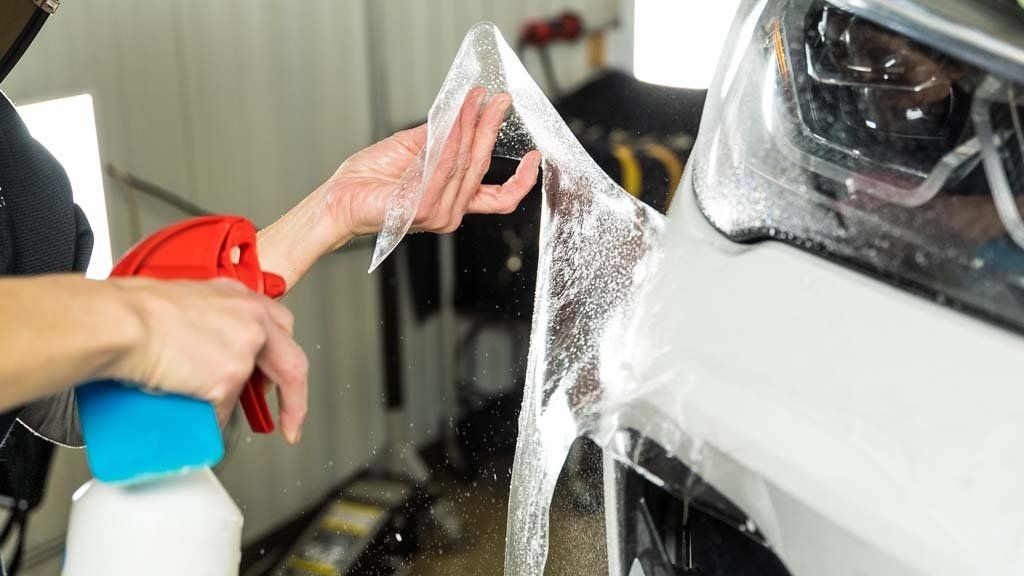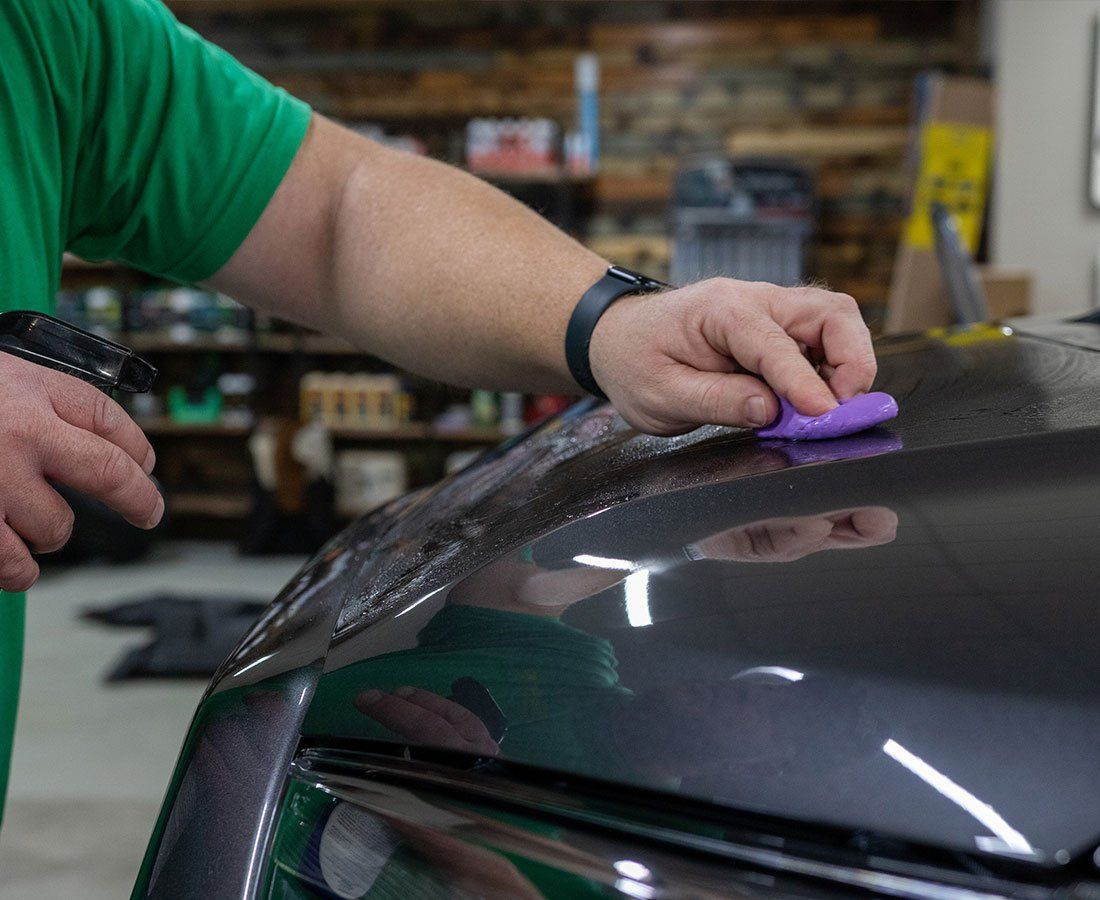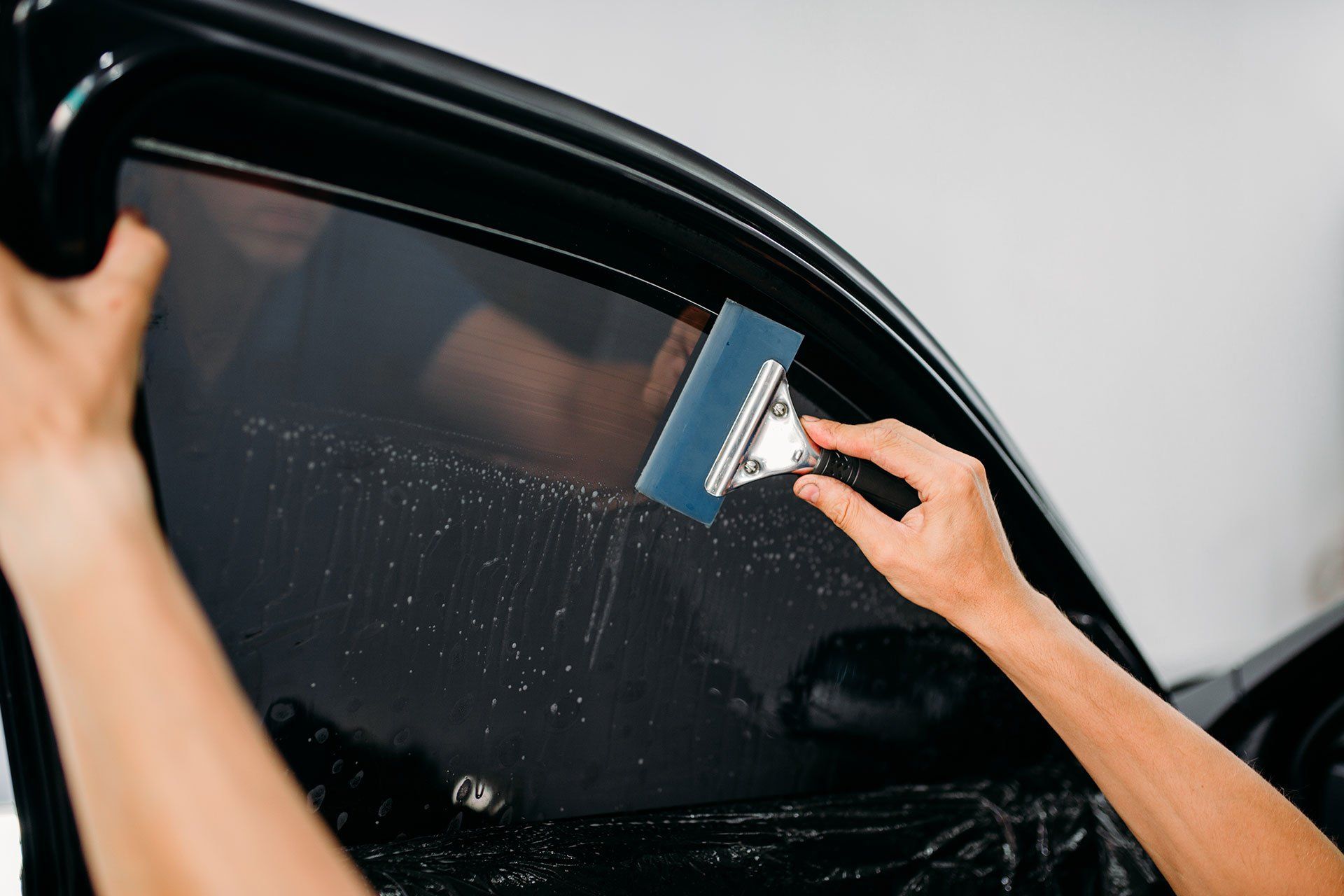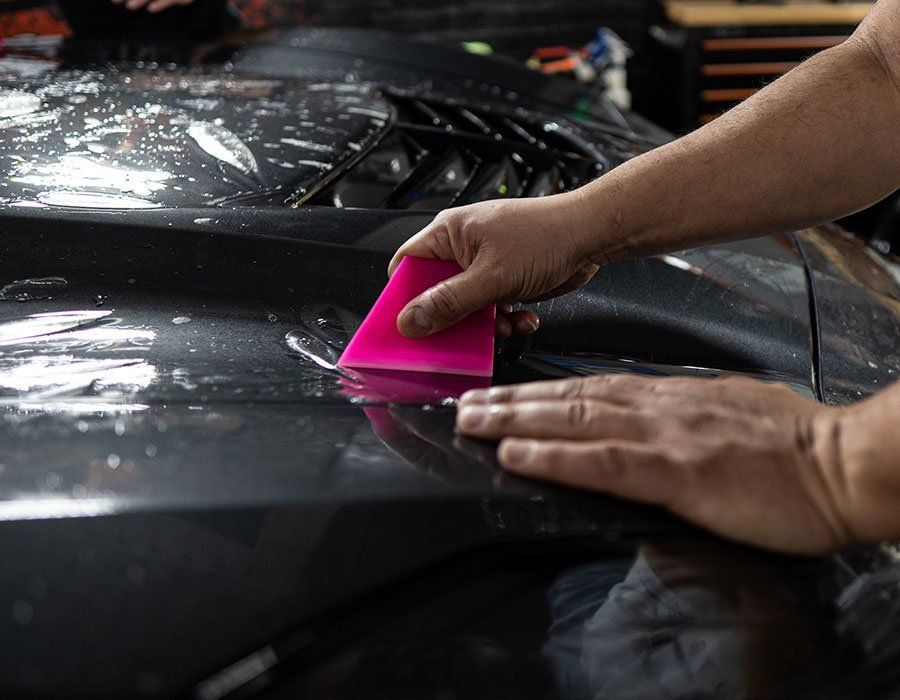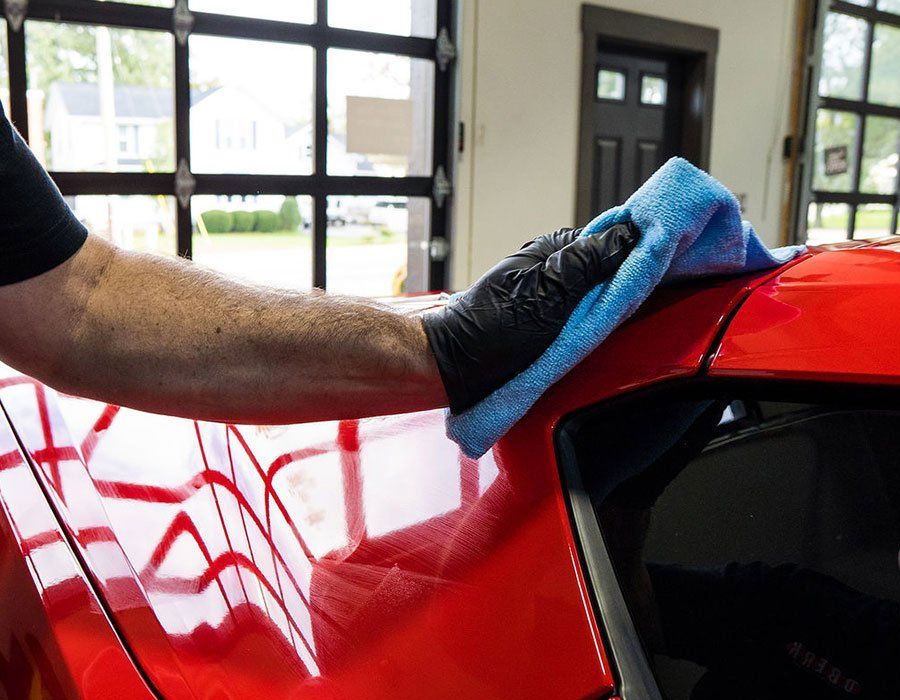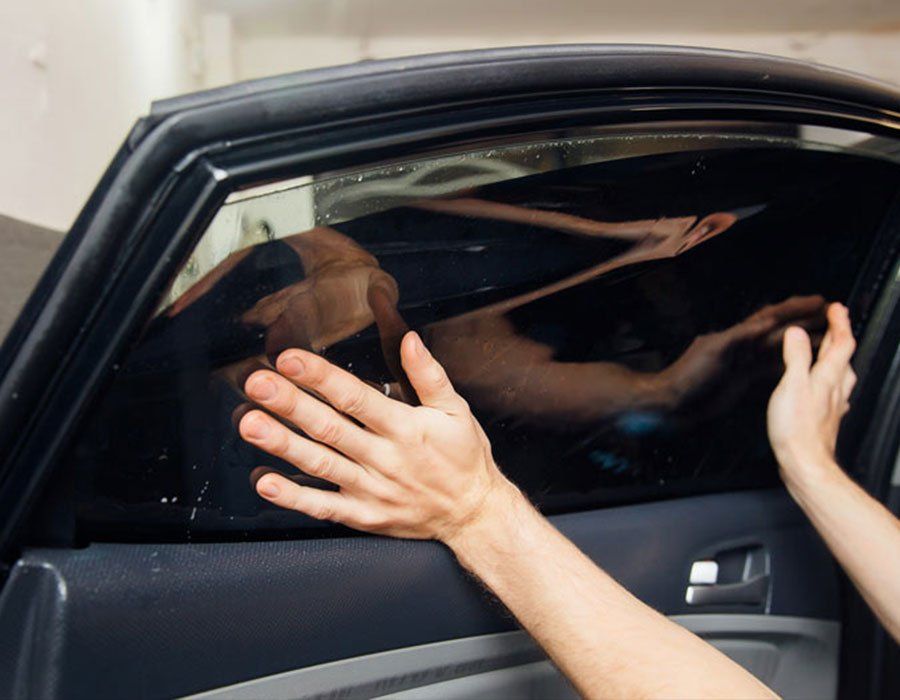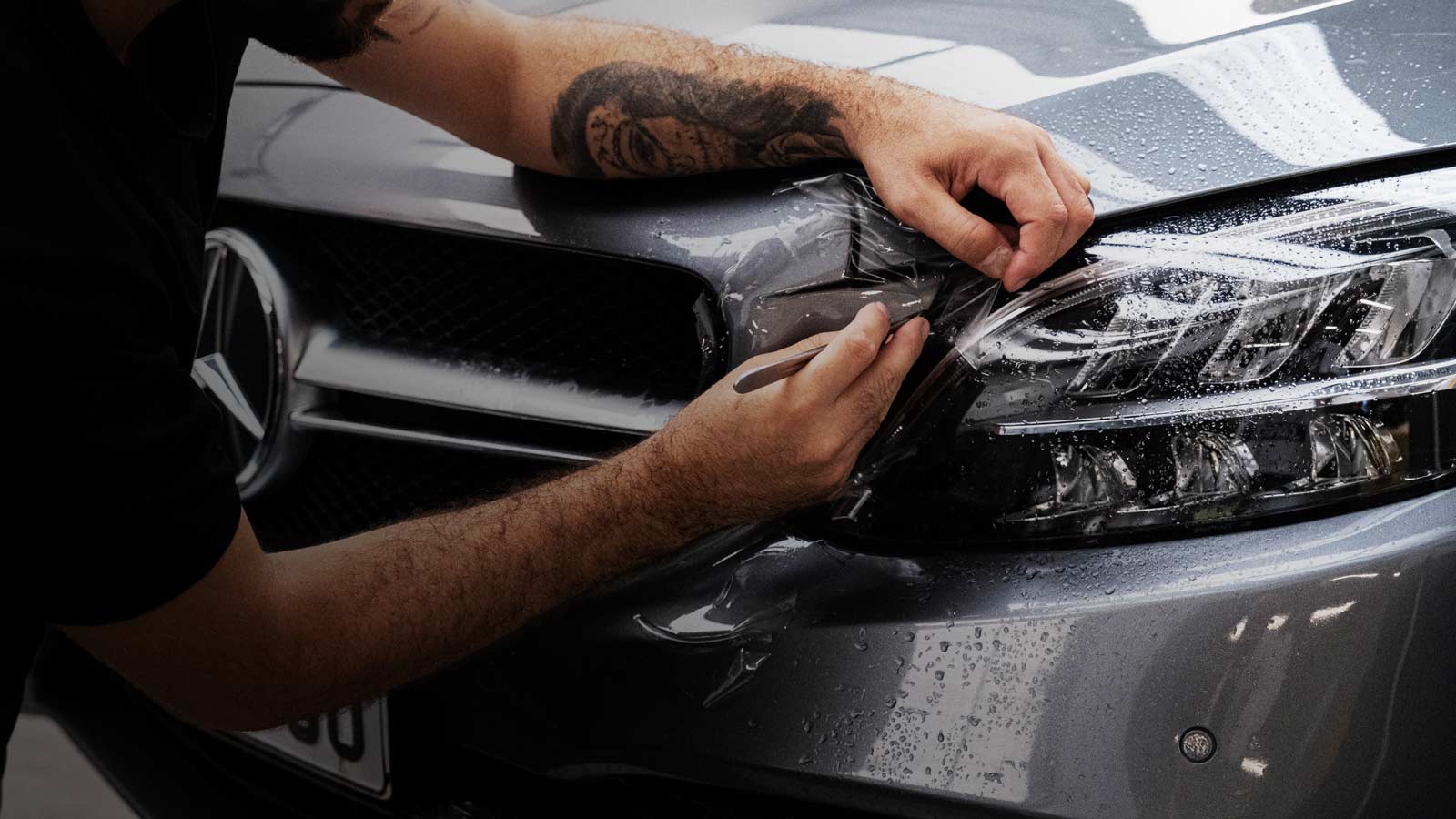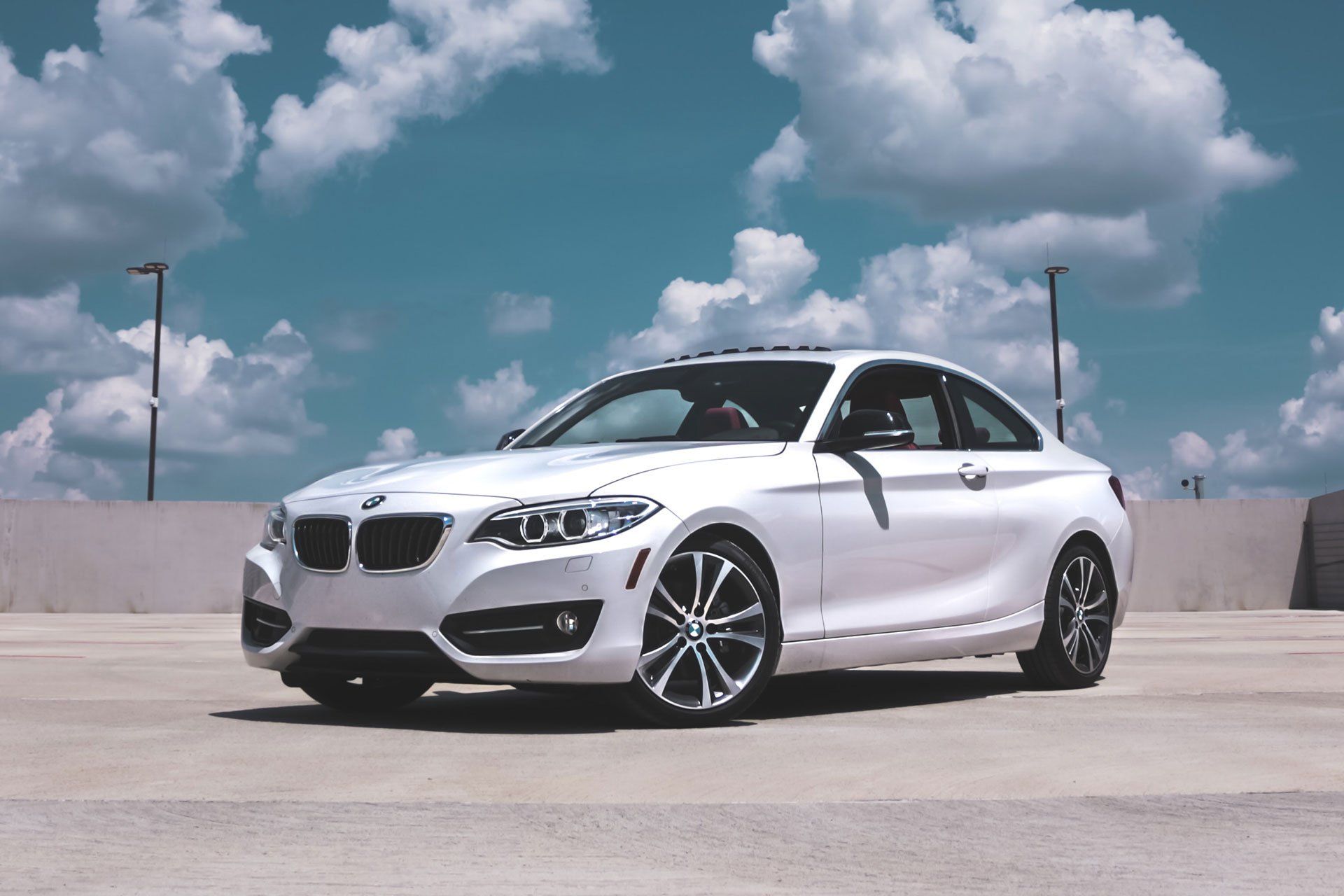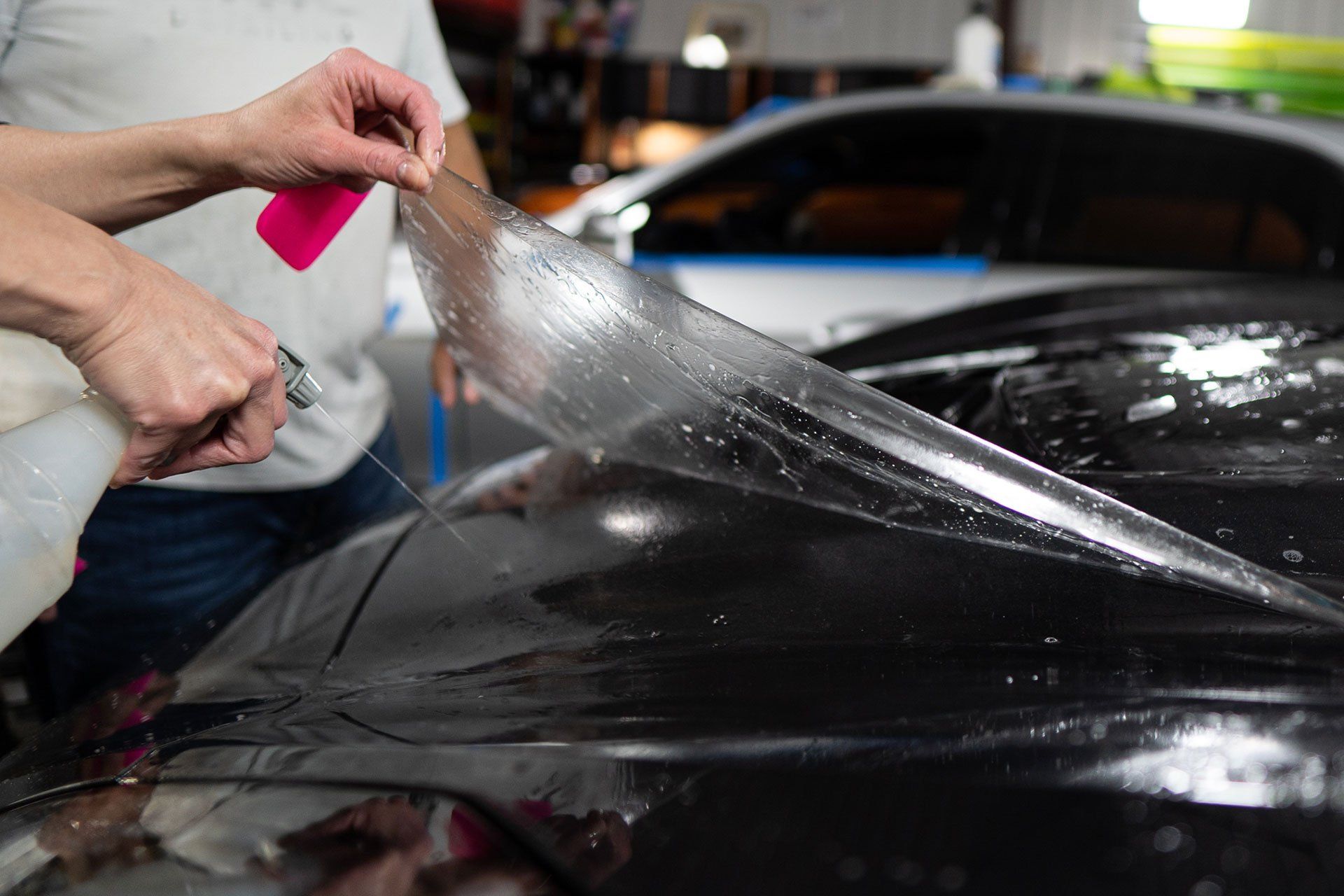PPF, or paint protection film, works like a shield for your car. It physically safeguards your car’s outer layer from scratches, rock chips, and harmful UV rays, keeping it in pristine condition. Unseen by an untrained eye, this invisible coat has an unexpected benefit: it can keep that glossy, brand new shine for much longer. Paint protection film enhances the visual appeal of your vehicle by providing a glossy and smooth finish that preserves the original paint. Additionally, it protects against scratches and chips, ensuring that your car maintains a pristine appearance for years to come.
What is Paint Protection Film?
Imagine a suit of armor for your car—that's the role of paint protection film or clear bra. It's an invisible shield designed to safeguard your car's paint from various hazards like scratches, rock chips, and UV light. This special film acts as a sacrificial layer that takes the hit, keeping your car looking pristine underneath. The magic of this film lies in its transparency. This film is virtually invisible when installed properly by experts, preserving the original color and shine of your car. It offers a glossy, smooth finish that wraps around the curves and edges of your car, effectively becoming an invisible yet powerful defender. If you've ever seen a brand-new car with flawless paint glinting in the sunlight, it probably had PPF. Even after years on the road, a car with a paint protection film can maintain that "fresh off the lot" appearance.
But it's not just about looks; the protective benefits of a clear bra extend far beyond mere aesthetics. Think of it as a shield against everyday foes that seek to mar your vehicle's surface. Harsh weather conditions, road debris, bird droppings, and corrosive substances like acid rain stand no chance against the resilience of paint protection film. PPF offers exceptional defense against the harmful effects of UV rays. UV radiation from the sun can cause paint to fade over time, robbing your car of its lustrous shine. However, with PPF acting as a barrier, your vehicle's paint remains shielded from these damaging rays. This means that you can enjoy driving in sunny climates or parking outdoors without worrying about unsightly discoloration or damage caused by UV exposure.
Installing Paint Protection Film on Your Vehicle
When it comes to applying paint protection film to your vehicle, attention to detail is paramount. Professional PPF installation is not just about making the process convenient; it also ensures that the film fits precisely into every curve and contour of your car. This meticulous cutting and shaping process is crucial to achieving a seamless application that offers comprehensive coverage. Imagine a tailor carefully crafting an outfit to fit you perfectly—this level of precision is what you'll want when installing paint protection film on your vehicle.
After all, the main purpose of this film is to create an invisible shield that safeguards your car's exterior from scratches, chips, and other forms of wear and tear. Any gaps or poorly applied sections could leave your vehicle vulnerable to potential damage. If you're considering investing in a paint protection film for your vehicle, opting for professional installation provides peace of mind and ensures that your prized possession receives the best care. Additionally, professional installation typically comes with a warranty, offering an added layer of protection for your investment.
Professional PPF Installation Process
The first step in professional paint protection film installation involves meticulously cleaning the surface of your vehicle to ensure that there are no contaminants or debris that could affect the adherence of the film. Next, the professionals will use precise cutting techniques to customize the PPF according to the specific dimensions and contours of your vehicle. This stage demands expertise and skill to accurately trim the film so that it fits seamlessly with each curve and edge of the car's surface. It's analogous to creating a custom-tailored suit for your vehicle—each piece has to be intricately shaped to match the unique design of the car. Just as a skilled artisan meticulously crafts a piece of art, professional installers use their expertise to ensure that every inch of the film adheres perfectly without any creases or bubbles.
Benefits of PPF for Your Paintwork
The application of paint protection film to your car extends several benefits that go beyond merely improving its appearance. One of the primary advantages of paint protection film is enhanced protection. PPF acts as a resilient shield, safeguarding your vehicle's paintwork from a wide array of threats, such as gravel, insects, road debris, and even harsh weather conditions. This protective layer acts as a sacrificial barrier that absorbs damage, preserving the original look of your vehicle's exterior and significantly reducing the need for frequent touch-ups or repainting.
Consider this: whether you're driving in harsh weather conditions or passing through areas with frequent road debris, a paint protection film takes on the impact, sparing your vehicle's paint from chips and scratches. It's like having a guardian for your car's exterior, ensuring it stays looking newer for longer. This can be especially reassuring for those living in regions with extreme weather conditions or heavy traffic. PPF also provides exceptional UV resistance. By effectively blocking harmful UV rays, it prevents the paint from fading or discoloring over time. This becomes particularly crucial for vehicles exposed to intense sunlight, where prolonged UV exposure can lead to unsightly discoloration and deterioration. With a paint protection film in place, you can rest assured that your car’s vibrant color will remain intact and won't succumb to the damaging effects of UV rays.
Imagine coming back to your car after a long day under the scorching sun and being greeted with the same lustrous finish every time. PPF ensures that your vehicle maintains its radiant appearance despite constant exposure to the sun’s UV rays. In addition to its protective capabilities, paint protection film also acts as a safeguard against damage from gravel and insects during long drives. Returning from a road trip to find pesky insect stains or unsightly stone chips on your vehicle can be incredibly frustrating. However, with PPF acting as a resilient shield, you can bid farewell to these concerns and drive with peace of mind, knowing that your car is well protected at all times. These dual benefits of enhanced protection and UV resistance make paint protection film an invaluable accessory for preserving the beauty and longevity of your vehicle's paintwork.
How PPF Elevates Vehicle Appearance
When you invest in a car, you want it to look its best for as long as possible. Paint protection film goes above and beyond by not only preserving your vehicle's paint but also significantly enhancing its appearance.
- Glossy Finish: The transparent layer of glossy PPF doesn't just protect your car; it gives it an alluring and glossy finish. This glossy effect adds depth and shine to the car's exterior, almost like a fresh coat of wax after a meticulous detailing session. The result is nothing short of mesmerizing, giving your car a jaw-dropping appearance that turns heads wherever you go. Imagine stepping outside on a bright sunny day only to see your car glistening with a lustrous sheen, showcasing a mirror-like reflection that truly sets it apart from the rest. This glossy finish isn't just about making your car look better—it acts as a visual testament to the care and attention you've put into maintaining its pristine condition. The glossy effect that PPF produces gives the car new life and effectively transforms a basic paint job into an eye-catching, show-quality finish.
- Fresh Look: One of the most remarkable aspects of paint protection film is its ability to keep your car looking fresh and vibrant, like it just rolled off the assembly line. By shielding the original paint from environmental elements such as UV rays, dirt, road debris, and bird droppings, PPF maintains the car's fresh appearance over time. Think of this film as a shield against the forces that cause paint to fade or lose its luster. With this invisible armor in place, your vehicle's appearance remains consistent, ensuring that its allure never diminishes despite exposure to harsh weather conditions or daily wear and tear. Picture yourself driving down the road, effortlessly catching glimpses of admiration from passersby as they marvel at the impeccably pristine condition of your car. That fresh-from-the-showroom look isn't just a one-time experience; it becomes an enduring hallmark of your vehicle's exterior thanks to the revitalizing effects of PPF.
Choosing Between Glossy and Matte Finishes
When it comes to deciding on the finish for your paint protection film, you have two main options: glossy and matte. Each finish has distinctive characteristics that greatly influence the overall appearance of your vehicle.
- Glossy Finish: A glossy finish amplifies the visual impact of your vehicle, providing a mirror-like reflective quality that enhances the depth and vibrancy of the underlying paintwork. It's like adding a layer of liquid glass to your car's surface, creating a lustrous sheen that is bound to turn heads. The smoother surface makes it easier to clean, as dirt and grime are less likely to adhere to the slick, reflective exterior.
- Matte Finish: Opting for a matte finish introduces an intriguing sense of sophistication to your vehicle's exterior. This non-glossy look has gained popularity for its understated elegance, bringing a sense of modernity and refinement. Matte finishes offer their own set of advantages. They are less prone to displaying fingerprints and smudges compared to glossy finishes, making them well-suited for daily use without constant upkeep. Additionally, any minor imperfections or blemishes may be less noticeable on a matte surface, contributing to its low-maintenance appeal.
To put it in perspective, choosing between glossy and matte finishes for your PPF is like selecting between high-gloss and flat paint when decorating your home. Both finishes offer distinct visual effects and require different levels of care and attention. By understanding the unique attributes of each finish, you can tailor your choice to best complement the look and feel you desire for your vehicle. Whether you opt for the bold allure of a glossy finish or the understated elegance of a matte finish, a paint protection film offers unparalleled protection while enhancing the aesthetic appeal of your vehicle.
Professional Paint Protection Film Installation in Tampa, FL
Give your car the ultimate shield against road hazards with Auto Film Guys, the trusted experts in professional paint protection film installation in Tampa, FL. Our skilled technicians at Auto Film Guys are dedicated to preserving your vehicle's factory finish by applying high-quality PPF that acts as invisible armor, guarding against rock chips, bug splatter, and other road debris. Trust us to deliver precision and expertise, ensuring a seamless and durable PPF installation that enhances your car's longevity and aesthetic appeal. Don't let the elements tarnish your prized possession; choose Auto Film Guys for top-tier PPF services. Schedule your appointment today or call us at (727) 940-2340 and let us safeguard your vehicle's beauty on the streets of Tampa, FL, with our professional PPF installation expertise!
The Auto Film Guys Blog
